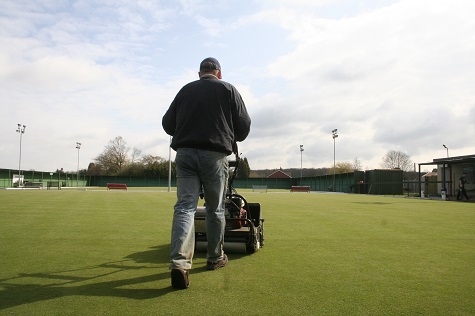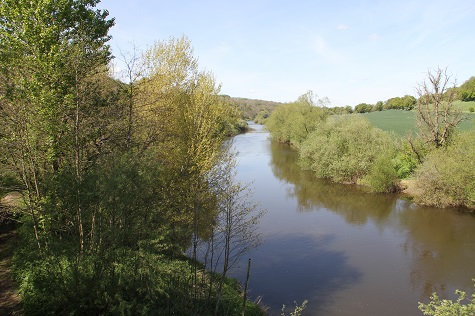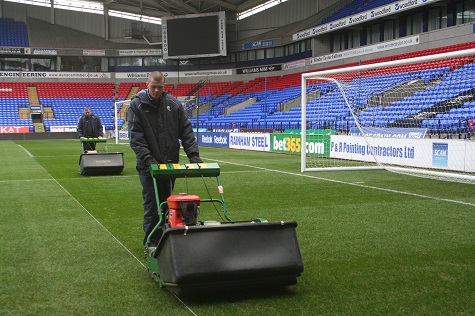
In this article we focus on the company GreenBest and, in particular, focus on their commitment to sustainable practice in their production of fertilisers and other products. I am grateful for their time in meeting me to discuss these issues and providing supporting information.
GreenBest specialise in manufacturing granular, liquid and soluble fertilisers, alongside soil conditioners, bio stimulants and wetting agents for the turf, lawn and horticultural markets. Their key objective is to manufacture fertilisers according to customer requirements, to perfectly match the conditions of turf, lawn or crop. Indeed, they are renowned for their bespoke service and knowledge of fertiliser formulations. They aim that every customer receives a tailored fertiliser, packaging and advice designed just for them.

Sustainable fertiliser production
Being more sustainable in fertiliser production is certainly not easy but GreenBest are committed to driving initiatives and processes forward to achieve it. They are committed to reducing the impact that they have on the world by increasingly decarbonising their business. GreenBest’s innovation laboratory is continuously researching how new products and technologies can be sustainable. They are however aware that being more sustainable is about economics as well as environmental and social factors. Moving to more sustainable practice needs to be planned and affordable. Of course, what could accelerate developments is policy change and legislation. However, Government are providing clear messaging which cannot be ignored.
The company is continually generating ideas and then seeks to rank them according to agreed criteria. Some are then immediately rejected but others are progressed and trialled. The ranking process, when considering fertiliser ingredients, is the EU, and soon to be UK, Carbon Adjustment Mechanism (CBAM). This considers such factors as travel miles (carbon footprint), recycling possibilities and types and source of ingredients. Opportunities to source ingredients from by products from other industries are always being considered such as organic residues from the food processing industry and ammonium sulphate from the steel industry. Thinking outside the box in this organisation is clear. For example, we all know the issues of phosphates in water, if we could catch the phosphate before it enters the water supply, all the better – more on this later.

Staying competitive
With all these things though, there remains a need for those supplying fertiliser to do so in a competitive market and at an affordable price to customers. It is a challenging issue. GreenBest is proud to be a bespoke fertiliser manufacturer, but it also needs to have some branded products. In the global marketplace branded product remains especially important and more traditional processes often more economic albeit less sustainable in terms of environmental and social impact. As a further example, in terms of organic fertiliser, there are opportunities to mine raw ingredients from the bottom of ponds in the Baltic countries, but this has expense and travel miles – is it more sustainable?
James Whittick is sales and marketing manager at GreenBest. He says ‘’reducing the environmental impact of fertilisers is very important to me and our industry. Without doubt fertilisers are causing massive damage to our plant albeit they remain essential for plant growth and what we do’’ In my discussion with him he talks further about phosphates and how they are an example of creating a one-way unbalanced problem. They are mined say in Morocco and used on our crops and amenity spaces. Some of that phosphate is retained on the ground and some in the plants or crop. The phosphates are then ingested by us from products such as bread or meat derived from the plants. Finally, we excrete it and, through our toilets, it enters the rivers. In the rivers it, along with other impurities, is causing eutrophication sometimes referred to as algae bloom. This starves the water from oxygen and is damaging to the natural balance of animal and plant life as well as a waste of phosphate, now some predicting to be run to an out of supply situation in future.

Carbon Zero Targets
A similar situation arises with urea whose manufacture relies very largely on fossil fuels. It creates emission and products from non-renewable sources. Yet urea remains a key ingredient in most branded fertilisers today. Urea also has consequences when used. There is leaching but also harmful emissions from growing plants on which it is applied. Indeed, fertiliser efficiency measured as nutrient retained in terms of applied can show up to 60% lost and more typically 40%. Whilst use in amenity can produce a slightly better picture than agriculture, it remains clear that ibn meeting carbon zero targets and reducing greenhouse gas emissions, we must seek out more sustainable solutions. In any case legislation will continue to apply that pressure.
GreenBest as a bespoke manufacturer currently uses some 300 ingredients with a great number of products. How they source ingredients in future will be crucial needing to consider economics, carbon footprint, impact on the environment and more. And of course, it will be crucial in terms of increasing legislation requirements on the use and amount of fertilisers used linked to global and national sustainability targets. There will be more organic fertilisers sometimes referred to as green. However, as this article has already highlighted, organic is not always the most sustainable especially if it requires great air miles and energy expended to produce.

Emphasis on re-cycling
Picking up on James Whittick’s point about one-way processes there is no doubt there will be increased emphasis on re-cycling. Returning fertiliser losses to benefit in further ways or to return to further feriliser manufacture. This will involve greater capture of nutrients in water, the re-cycling of packaging by composting, the use of grass clippings in amenity situations etc. Whilst mining ingredients has done us well, it is depleting natural resources and is not generally seen as sustainable. There will be ever increasing pressure to reduce mining and seek alternatives.
In the here and now, GreenBest puts sustainable practice front and centre of its plans and operations. It will continue to innovate in sourcing and use. As mentioned, the choice of organic sources is important as long as it is truly so. Utilising by products is key as long as it is cost effective, an essential element for long term sustainability. On operational matters the organisation is addressing issues of more sustainable packaging, re-cycling the latter and being increasingly more focussed on transport and logistics.
For users of fertiliser, there needs to be emphasis on increased frequency of applications, little and often, and by these reducing losses, increasing impact and reducing environmental consequences. It is about feeding the plant not the environment. Whilst not practical currently, application at different levels to suit conditions on a daily basis would be the best. However, with further development of drone technology and Artificial intelligence, who knows what the future holds.
Conclusion
What is abundantly clear from my discussions is that GreenBest are fully committed to sustainable practice and best serving its customers going forward. As Daisy Lacey from GreenBest said in a recent presentation to the UK lawn Care association ‘ the future of fertilisers and their application relies upon research especially related to sourcing, greater flexibility of thinking in their use and the advance of application technology’ Exciting albeit challenging times are ahead.